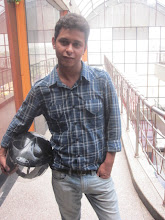AGNI-3
| Agni-III | |
|---|---|
| Type | Intermediate Range Ballistic Missile |
| Place of origin | |
| Service history | |
| In service | Active [1] |
| Used by | Indian Army |
| Production history | |
| Manufacturer | Defence Research and Development Organisation (DRDO), Bharat Dynamics Limited (BDL) |
| Unit cost | |
| Specifications | |
| Weight | 48,000 kg[3] |
| Length | 17 m[4] |
| Diameter | 2.0 m[4] |
| Warhead | Strategic nuclear (~15 KT to ~250 KT[~2,000Kg-~2,500Kg]), conventional, Thermobaric |
| Engine | Two stage solid propellant engine |
| Wingspan | Unknown |
| Operational range | 3,500 km - 5,000 km |
| Flight altitude | > 350 km |
| Speed | 5-6 km/s (Agni-II)[5] |
| Guidance system | Ring Laser Gyro- INS (Inertial Navigation System), optionally augmented by GPS terminal guidance with possible radar scene correlation |
| Launch platform | 8 x 8 TELAR (Transporter erector launcher) Rail Mobile La |
Agni-III is an intermediate-range ballistic missile developed by India as the successor to Agni-II. The ballistic missile has a range of 3,500 km- 5,000 km, which means that India is capable of engaging targets deep inside neighbouring countries. The missile’s Circular Error Probable (CEP) is within 40 meters range, which makes it most sophisticated and accurate ballistic missiles of its range class in the world.In June 2011, Defence Research and Development Organisation reported that development of Agni-III has been completed and already been inducted into the armed forces. It's reported to be under production.
Introduction
India's Minimum Credible Nuclear Deterrence envisages a triad of nuclear counterstrike capability which required a long range missile to provide robust second strike capability. A missile system that can be dispersed far and wide in the Indian mainland, its far flung islands or its blue water naval assets dispersed across the world's oceans. Following this necessity India developed a larger Agni-III missile, with a heavier payload and a longer range but in a compact configuration, i.e. thicker but shorter length. This development is driven by need for a more assured retaliation that can defeat emerging ABM defenses and countermeasures. Such capability requires a compact missile that can also carry ABM counter-measure payloads along with weapons, in a configuration similar to MIRV, albeit with state-of-the-art decoys.
AGNI-5
| Agni-V | |
|---|---|
| Type | Intercontinental ballistic missile |
| Place of origin | India |
| Service history | |
| In service | Under development (Design completed) |
| Used by | Indian Army |
| Production history | |
| Manufacturer | Defence Research and Development Organisation (DRDO), Bharat Dynamics Limited (BDL) |
| Unit cost | |
| Specifications | |
| Weight | 50,000 kg |
| Length | 17.2 m |
| Diameter | 2 m |
| Engine | Three stage solid |
| Operational range | 6,000 km |
| Launch platform | 8 x 8 Tatra TELAR (Transporter erector launcher) & Rail Mobile Launcher (canisterized missile package) |
Agni-V is an solid fueled intercontinental ballistic missile under development by DRDO of India. It will greatly expand India's reach to strike targets up to 6,000 km away. Agni-V will carry Multiple Independent Re-entry Vehicles (MIRV) allowing targeting of multiple assets by an single missile. Missile tests are expected to begin in December 2011.
Introduction
Dr M Natrajan, an senior defense scientist of India, disclosed in 2007 that DRDO is working on an upgraded version of the Agni III known as the Agni-V (Earlier known as Agni-III* and Agni-IV) and that it will be ready in 4 years. The missile will have a range of about 6000 km. In September 2010, DRDO Chief V.K. Saraswat confirmed that the first test flight will be conducted in 2011. The missile will be tested for the first time in fourth-quarter of 2011.
The armed forces are already inducting the two-stage 3,500-km Agni-III after completion of its developmental and pre-induction trials last year, having earlier operationalised the Pakistan-specific Agni-I (700-km) and Agni-II (over 2,000-km) missiles.
For one, it will be quite easy to store and swiftly transport the 17.5-metre tall Agni-V by road since it's a canister-launch missile system, unlike the earlier Agni missiles.
For another, Agni-V would also carry MIRV (multiple independently targetable re-entry vehicles) payloads being concurrently developed. A single MIRVed missile can deliver multiple warheads at different targets even if they are separated by long distances.
"We have tested the three (solid-propellant composite rocket motor) stages of Agni-V independently...all ground tests are now over. The integration process is now in progress. We want to test the missile in December, not let it spill over to 2012," DRDO chief V K Saraswat told TOI on Friday.
This came after defence minister A K Antony, addressing the annual DRDO awards ceremony, asked defence scientists to "demonstrate" the 5,000-km missile's capability "at the earliest".
With a "launch mass" of around 50 tonne and a development cost of over Rs 2,500 crore, Agni-V will incorporate advanced technologies involving ring laser gyroscope and accelerometer for navigation and guidance. It takes its first stage from Agni-III, with a modified second stage and a miniaturized third stage to ensure it can fly to distances beyond 5,000 km.
An ICBM, incidentally, usually denotes a missile capable of hitting targets over 5,500 km away, and has largely been the preserve of the Big-5 countries till now.
DRDO is also gearing up for another test of its two-tier BMD (ballistic missile defence) system, designed to track and destroy hostile missiles both inside (endo) and outside (exo) the earth's atmosphere, around this August with a new interceptor missile called PDV to add to the existing ones.








0 comments:
Post a Comment